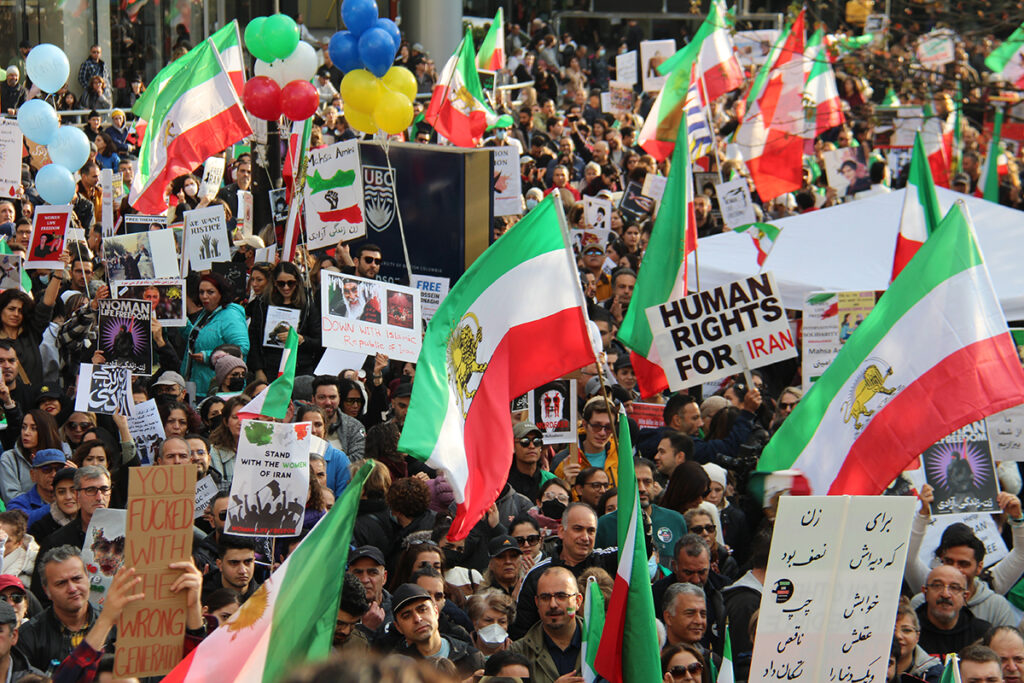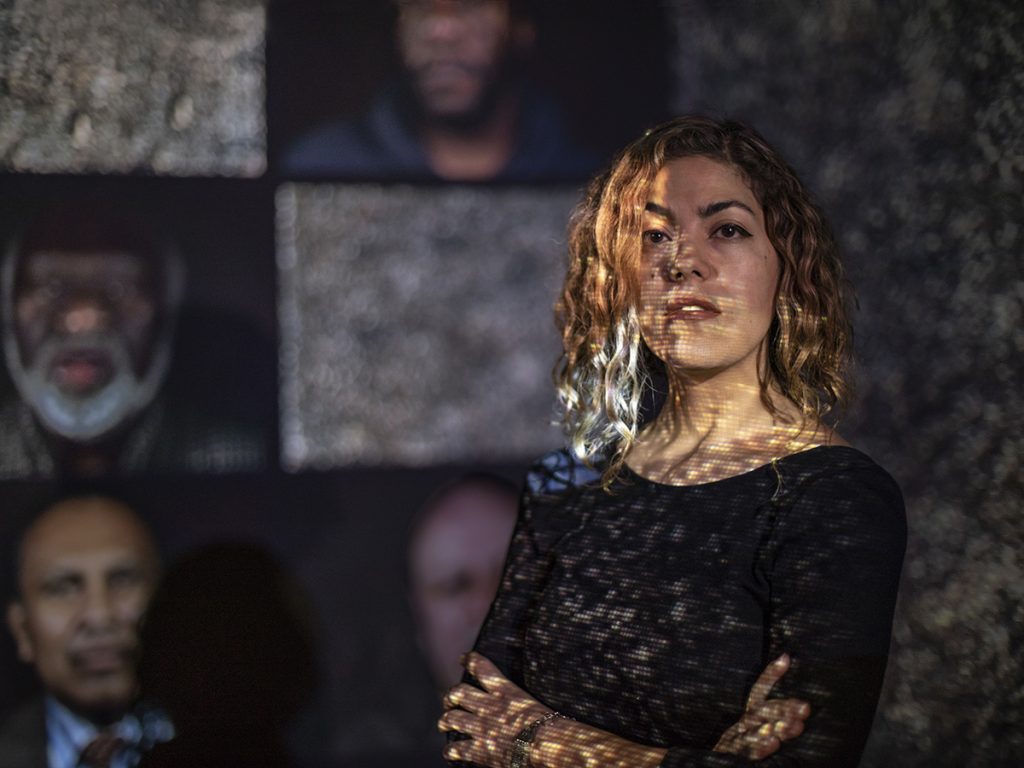Spotlighting Social Justice … in Iran

Asma Nobari Khoshmehr, MFA ’24 a graduate student in Film and Media Art, was in Iran last year visiting family when she joined one of the human rights protests sweeping the country since Mahsa Amini was detained and beaten by Iran’s morality police for not wearing a hijab and died in custody.
“It was very scary,” said Khoshmehr, who had to wait nine years to get a travel permit to visit her family. “I was there for like, two or three days, and I realized it’s really not safe, because I saw in front of my eyes, [authorities] shot a person in his leg.”
Three of Khoshmehr’s friends in Iran have since been jailed for protesting or reporting on the protests, and many of her Iranian classmates – particularly those who have recently come to the United States to study — have been struggling with grief and anxiety resulting from losing friends and having family members under surveillance, she said.
Khoshmehr and Assistant Professor Rashin Fahandej are hosting an International Women’s Month event to bring awareness to the social justice movement surging throughout Iran, and how that affects both Emerson’s small, tight-knit Iranian community, and the global community.
“Let’s Talk About … Iran. Women. Life. Freedom.” will take place Friday, March 31, 1:00-2:30 pm, in the Iwasaki Library Co-Lab. It’s sponsored by the Office of International Student Affairs.

Fahandej, an immersive filmmaker and cultural activist, said she and Khoshmehr will provide some background into the history of Iran and the struggle for human rights in the country, especially as it pertains to women, and how they see their role as media makers.
Earlier this month, Homa Sarabi, director of production safety and sustainability for the Visual and Media Arts Department, and Anna Feder, head of film exhibitions and festival programs, co-curated a screening of short films made by Iranian women for the Bright Lights Cinema Series, and Fahandej spoke about art as resistance on a panel at the Museum of Fine Arts-Boston for their Nowruz (Persian New Year) celebration.
Too often, when we talk about social justice challenges, we tend to confine them within set boundaries of nations or communities within nations, and it makes it difficult to frame social justice in a global perspective, Fahandej said.
Because Iran has been isolated from much of the rest of the world since the Islamic Revolution in 1979, and because most of the Western world’s understanding of the country has been filtered through polarized media, it’s been difficult for those of us in the West to separate images and impressions of Iran’s government from those of its people, she said.
“This women-led movement in Iran has been empowering women and men across nations and opening new avenues for global solidarity. What’s important for us, as a media institution, is to reconsider our role and responsibility in breaking images of othering and creating curiosity and solidarity across nations,” Fahandej said.
The resistance of the past six months has not been the first time that Iranians have taken to the streets to protest injustice. In the 2009-2010 Green Movement, which Khoshmehr said she also participated in, citizens demanded the removal of president Mahmoud Ahmadinejad from office, accusing him of human rights violations and winning election fraudulently. The movement eventually lost momentum, amid violent crackdowns and arrests and government interference with internet service.
Both Fahandej and Khoshmeher believe this time is different.
The Iranian leadership has not been as successful in shutting down the internet this time, and satellite television has been beamed into the country, so there has been more of a free flow of information and images into and out of Iran, Fahandej said.
“It’s shifting the power dynamic, we are able to record and we are able to [bear] witness. There’s an accumulation happening of witnessing these brutalities and not accepting them, and that creates a form of collective memory and collective history. [We see] it’s not one case, it’s actually a systemic issue we are dealing with,” she said.
People inside Iran rely on individuals globally witnessingwhat’s happening and demanding accountability , Fahandej said.
Thanks to an outcry from the Iranian diaspora and others following the death of Amini, the United Nations last December removed Iran from the UN Commission on the Status of Women.
Khoshmehr, who said she also participated in the Green Movement, said she’s “optimistic” that the ongoing protests will result in more accountability for the Iranian government.
“This time it’s pretty different,” she said. “You can see a lot of the new generation, and specifically women, [are protesting]. I feel they’re pretty fed up.”
She said there seems to be more understanding on the part of people in the West that Iranian women aren’t just silent and oppressed.
“People kind of realize your real image as an Iranian woman, and that’s empowering,” Khoshmehr said. “I’m pretty proud, specifically of the new generation, they are fearless people.”
Categories